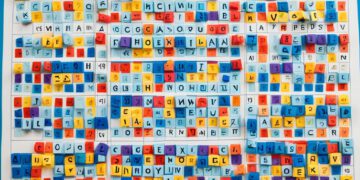Imagine yourself walking through an urban landscape transformed by the anonymous artistry of Banksy, a prominent figure in the stencil art revolution. This form of artistic expression, often politically charged and socially poignant, has altered the way you perceive street art.
But have you ever pondered over its roots, the evolution of its techniques, or the social impact it has had? As we delve into the world of stencil art, you’ll uncover these aspects and more, leaving you with an enriched understanding of this revolutionary art form.
Origins of the stencils revolution
The birth of the Stencils Revolution isn’t just a mark on the timeline of art history, but a pivotal moment that transformed artistic expression worldwide. It’s a revolution you can’t ignore, one that shook the foundations of traditional art and gave a voice to the voiceless.
In the late 20th century, the streets became the canvas for rebellious artists. They started using stencils, a tool previously associated with industrial marking, as a means of creating art. The beauty of this technique is in its simplicity and speed. You don’t need a studio or expensive materials. All you need is a stencil, some spray paint, and a wall.
The result? Rapidly produced, easily replicated, and strikingly impactful images that spoke to the masses. These images started to appear in every corner of the globe, from the back-alleys of Paris to the bustling streets of New York. They spoke of political unrest, social inequality, and cultural identity.
The Stencils Revolution wasn’t just about a new technique. It was a new form of expression, a new language of art. It was about artists taking control of their work, breaking down the barriers between high and low art, and reaching out to people in a way that was never before possible.
Prominent figures in stencil art
As we explore this art revolution further, you’ll find it’s impossible to overlook the stencil artists who, through their bold and provocative work, became the faces of this movement. These artists, like Banksy and Shepard Fairey, have made a significant impact on this art form.
Banksy, the anonymous England-based street artist, has become an icon in stencil art. His thought-provoking works often contain sharp political and social commentary. You’ve likely seen his famous piece ‘Girl with Balloon’, a poignant reflection on lost innocence.
Shepard Fairey, an American artist and social activist, is another figure you can’t forget. You may recognize his ‘Obey’ campaign, which has become a global phenomenon. This campaign, started in the late ’80s, uses simple yet striking stencil designs to challenge viewers to question societal norms.
Equally important is French artist Blek le Rat, often dubbed as the ‘father of stencil graffiti’. His work paved the way for many artists, including Banksy himself. His stencils, often featuring rats, symbolize the oppressed and forgotten individuals in society.
Impact of stencil art on society
You mightn’t realize it, but stencil art’s influence on society is far-reaching, shaping our perceptions of politics, culture, and even the definition of art itself. This form of artistic expression has moved from the fringes into mainstream consciousness, changing how we view the world.
Take politics, for instance. Stencil art is often used to voice dissent, challenge authority, and spotlight injustices. You’ve probably seen powerful images sprayed onto public walls, carrying messages that provoke thought and incite action. This art form empowers the voiceless, making it a tool for social and political change.
Then there’s the impact on culture. Stencil art’s accessibility and versatility means it’s been embraced by diverse cultures worldwide. It’s become an integral part of urban culture, shaping cityscapes and adding vibrancy to otherwise mundane environments.
Lastly, stencil art has challenged conventional definitions of art. It’s shown that art doesn’t have to be confined to galleries—it can be on the streets, accessible to all, not just the elite. It’s democratized art, giving everyone the chance to express themselves creatively. In these ways, stencil art has truly revolutionized society.
Techniques and innovations
While stencil art’s societal influence is undeniably profound, it’s also worth examining the ingenious techniques and innovations that have shaped this dynamic art form. You’ve probably noticed the intricate details and sharp lines that characterize stencil art, but have you ever wondered how artists achieve such precision? It’s all about the technique.
Artists begin by creating a design on a thin, sturdy material like cardstock or plastic. They carefully cut out the design, creating a stencil. Then, they secure it to their chosen surface and apply paint. The paint only reaches the areas exposed by the cut-out design, creating a crisp, clean image when the stencil is removed.
But the innovation doesn’t stop at technique. Artists are constantly pushing boundaries, using stencils in unconventional ways. They’re layering multiple stencils to create depth and complexity, playing with color and texture, and even incorporating digital technology into their process. They’re breaking out of the two-dimensional realm, using stencils on sculptures and installations for a unique, immersive experience.
Future prospects of stencil art
Looking ahead, stencil art holds a vibrant future, filled with endless possibilities and untapped potential. You’ll see this form of artistry break out of its traditional confines, permeating various areas of life. It won’t be confined to just walls and streets; it’ll be a part of interior design, fashion, and even technology.
Imagine waking up to a room adorned with intricate stencil designs, wearing clothes with unique stencil prints, or scrolling through a website with stencil-inspired graphics. That’s the future we’re heading towards. As technology advances, you’ll witness the evolution of stencil art. It’ll merge with digital platforms, giving rise to interactive and immersive art experiences.
However, the future isn’t just about expansion and innovation. It’s also about revisiting the past. You’ll see artists exploring traditional stencil techniques, reviving them in the contemporary art scene. The future of stencil art is a glorious fusion of the old and the new.
Conclusion
You’ve seen how stencils have revolutionized art, from humble origins to influential figures and societal impacts. The techniques and innovations have been mind-blowing, haven’t they? And the future? It’s brimming with potential. So, stay tuned, keep exploring, and who knows? You might just become a part of this revolution too.
Remember, stencil art isn’t just a trend, it’s a movement, and it’s here to stay.










